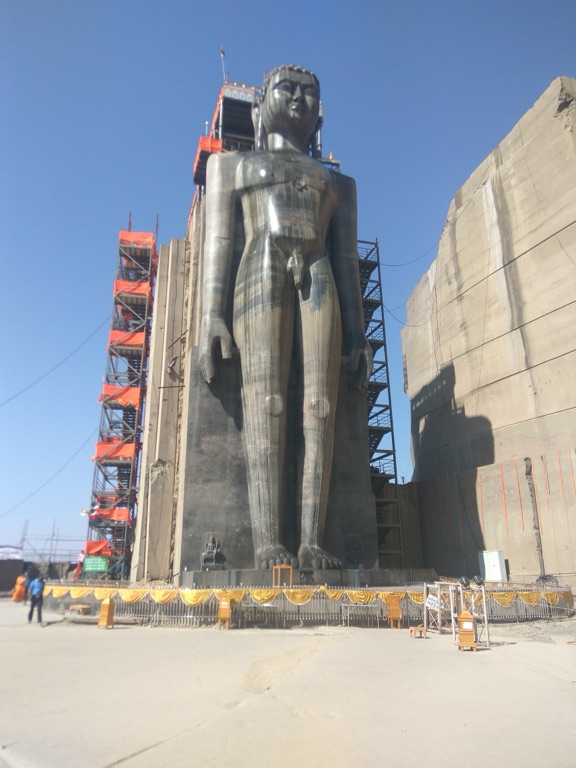The Statue of Ahimsa: A Monumental Achievement in Jain Art and Devotion
The Statue of Ahimsa, located at Mangi-Tungi, Nashik, Maharashtra, stands as a testament to the spiritual and artistic aspirations of the Jain community. This colossal statue, dedicated to the first Jain Tirthankara, Rishabhanatha, is recognized by the Guinness World Records as the tallest Jain statue in the world. The statue, including its pedestal, reaches a height of 121 feet (37 m), with the figure itself measuring 108 feet (33 m). Carved directly out of the sacred Mangi-Tungi hills, this monumental sculpture not only represents a significant religious icon but also a remarkable feat of engineering and artistry.
Get your dose of History via Email
Historical Background
The vision for the Statue of Ahimsa was first conceived by the Jain nun Gyanmati in 1996, with the foundation stone laid in 2002. The construction process involved the removal of more than 10,000 truckloads of rock, a testament to the dedication and effort put into the statue’s creation. The Mangi Tungi hills, where the statue is located, hold great religious significance for the Jain community, being one of the four siddha kshetras in Maharashtra. These hills have long been a pilgrimage site, adorned with several Jain temples at their base and pinnacles, attracting devotees from the Marathi and Gujarati Jain communities.
The Statue
The image of Rishabhanatha is carved from a single rock, standing 108 feet tall, with the pedestal extending its height to 121 feet. Positioned 4,343 feet above sea level, the statue is not only a spiritual icon but also an architectural marvel, recognized in 2016 by the Guinness World Records as the world’s tallest Jain idol. The project was brought to fruition under the guidance of notable figures such as Aryika Gyanmati, Aryika Chandanamati, and was chaired by Raveendra Kirti, with significant contributions from engineers and artisans.
Premises and Celebrations
The development of the temple area surrounding the statue was supported by initial funds of ₹18.5 crore from the rural development department. The Panch Kalyanaka Pratistha Mahotsav, a significant festival marking the consecration of the statue, was held in February 2016, drawing thousands of pilgrims and participants. This event underscored the statue’s importance as a focal point for Jain devotion and community.
The first Mahamastakabhishek, a significant ritual involving the anointment of the statue, took place shortly after, highlighting the spiritual significance of the statue within the Jain tradition. This ceremony saw participation from notable figures across the Jain community and beyond, further cementing the statue’s role as a beacon of faith and devotion.
Conclusion
The Statue of Ahimsa is more than just a record-breaking sculpture; it is a symbol of the Jain community’s devotion, artistic heritage, and spiritual aspirations. Its construction not only showcases the technical prowess and artistic dedication of its creators but also serves as a focal point for Jain pilgrimage and religious ceremonies. As the tallest Jain statue in the world, it stands as a monumental tribute to the teachings of Rishabhanatha and the enduring values of the Jain faith.
Sources:

